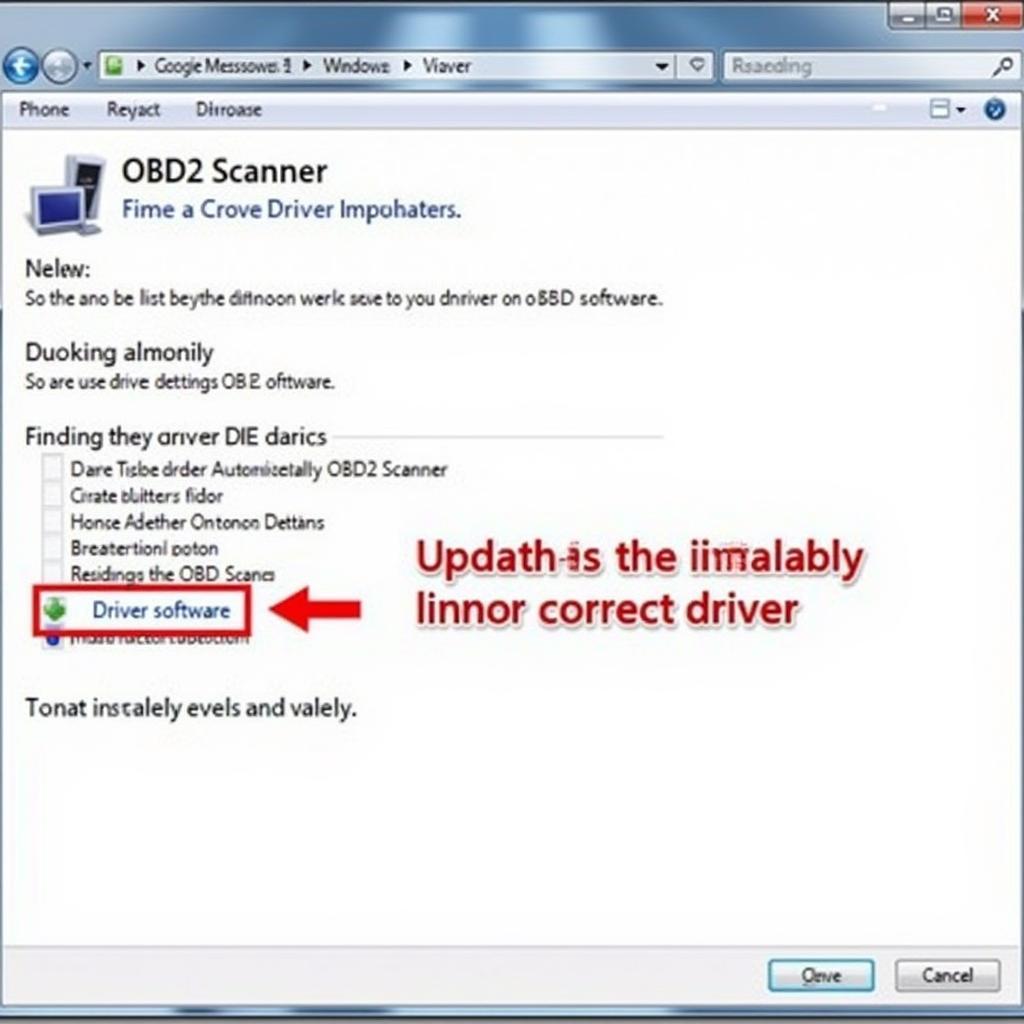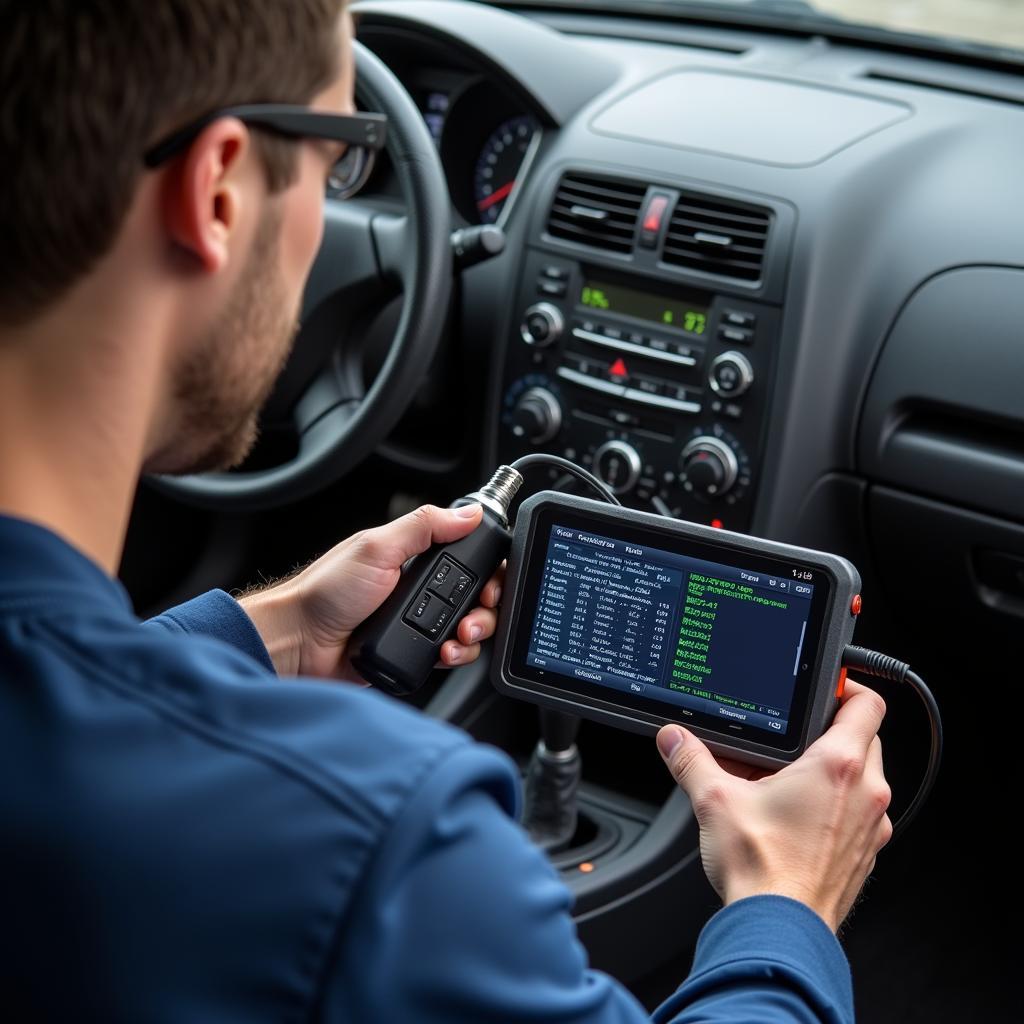Finding reliable OBD1 scan tool software for free download can be challenging. This guide explores the landscape of OBD1 diagnostics, covering software options, compatibility, and how to use these tools effectively for troubleshooting your vehicle. We’ll discuss the differences between OBD1 and OBD2 systems, the benefits of using scan tools, and the importance of choosing the right software for your specific needs.
Understanding OBD1 Systems
Before diving into software options, it’s important to understand what OBD1 is. Unlike the standardized OBD2 system implemented in 1996 and later vehicles, OBD1 systems vary significantly between manufacturers and even models within the same brand. This means finding universal software can be tricky. OBD1 systems often rely on manufacturer-specific connectors and protocols, requiring specialized tools and knowledge. They primarily focus on engine performance and emissions-related data.
Why Use OBD1 Scan Tool Software?
Even though OBD1 systems are older, using scan tool software can still be invaluable. It allows you to:
- Diagnose trouble codes: Identify the source of check engine lights and other issues.
- Monitor sensor data: Track real-time data from various sensors, such as oxygen sensors, coolant temperature, and airflow.
- Perform tests: Conduct specific tests on components like the fuel injectors or EGR valve.
- Save time and money: By quickly identifying problems, you can avoid unnecessary repairs and downtime.
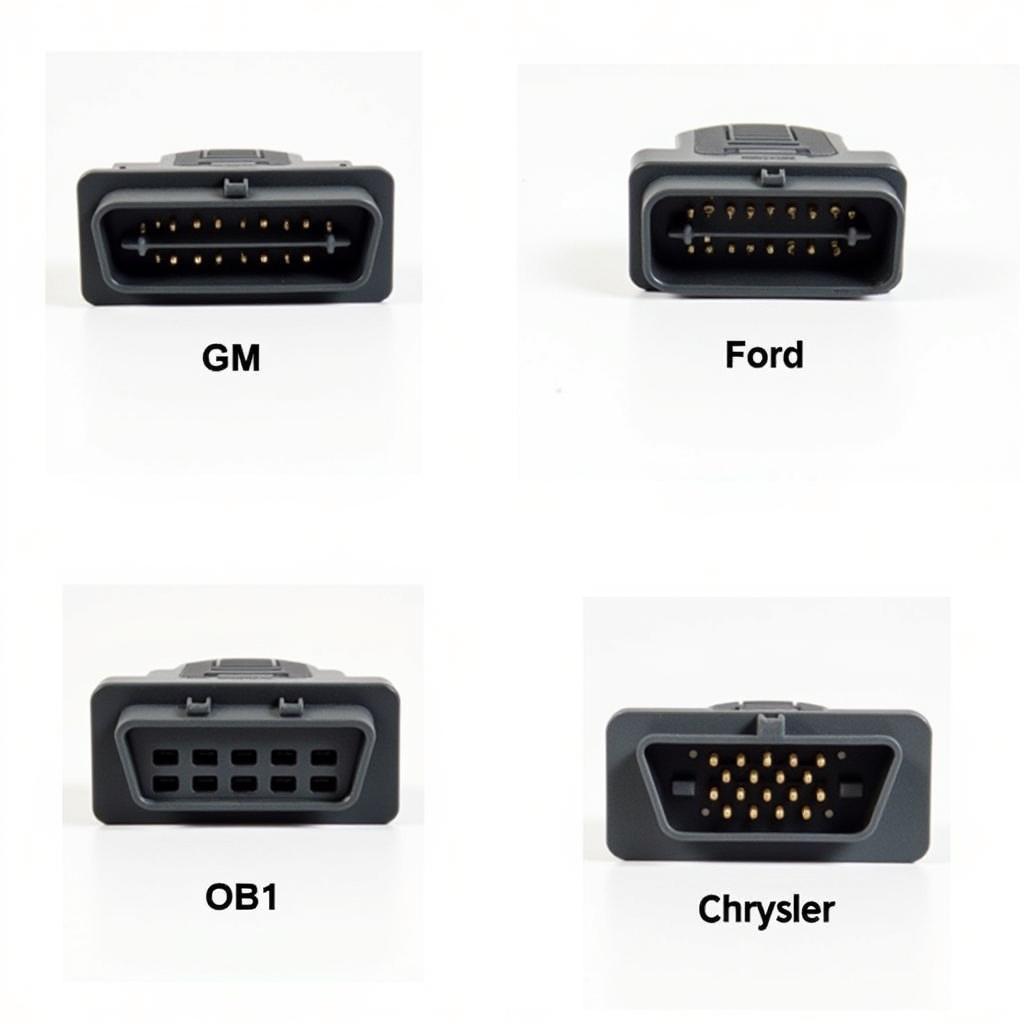 OBD1 Connector Types
OBD1 Connector Types
Finding OBD1 Scan Tool Software Free Download Options
While truly free, fully-featured OBD1 scan tool software is rare, several options exist depending on your vehicle’s make and model. Some manufacturers offer free basic diagnostic software, while others require paid subscriptions. You can also find enthusiast-developed software for specific vehicle platforms, often available for free download on forums or dedicated websites.
Free Software Options: Exploring the Possibilities
While limited, free software options for OBD1 systems do exist. These options are often tailored to specific vehicle manufacturers or models, so it’s crucial to find one compatible with your car. Online forums and enthusiast communities can be valuable resources for locating and downloading such software.
Paid Software Options: Investing in Professional Tools
Investing in professional-grade OBD1 scan tool software often provides more comprehensive features, regular updates, and dedicated technical support. While these options come at a cost, they can offer significant value, especially for professional mechanics or serious DIY enthusiasts.
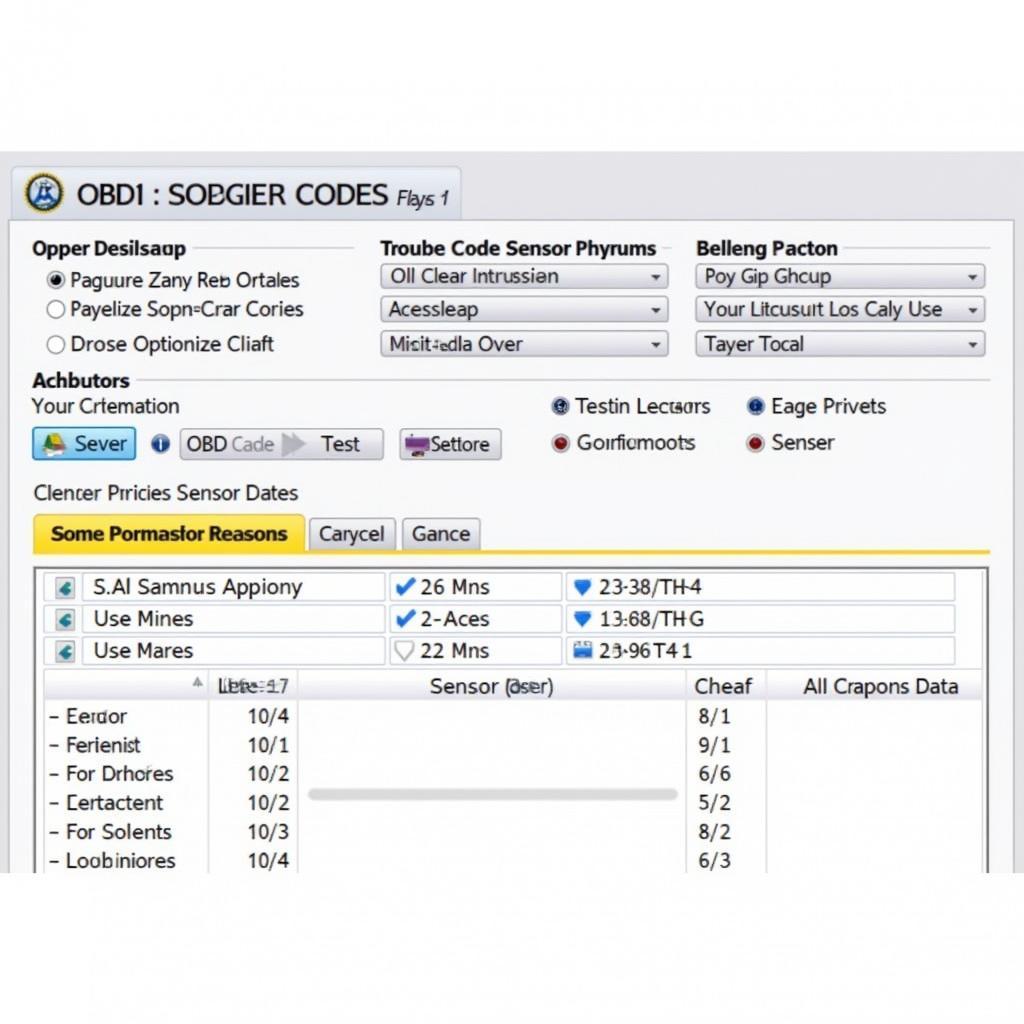 OBD1 Software Interface Example
OBD1 Software Interface Example
Connecting and Using OBD1 Scan Tool Software
Connecting to your vehicle’s OBD1 system usually requires an interface cable that connects your computer to the diagnostic port. These cables are often available online or from automotive parts stores. Once connected, you can launch the software and begin diagnosing your vehicle.
Step-by-Step Guide for Using OBD1 Scanners
- Locate your vehicle’s diagnostic port: This is typically under the dashboard or in the engine compartment.
- Connect the interface cable: Make sure the cable is compatible with both your vehicle and your computer.
- Install and launch the software: Follow the software’s instructions for installation and setup.
- Select your vehicle’s make and model: This allows the software to communicate correctly with your car.
- Read trouble codes: The software will display any stored diagnostic trouble codes.
- Clear trouble codes: After addressing the issue, you can clear the codes using the software.
- Monitor sensor data: View real-time data from various sensors to diagnose problems.
OBD1 vs. OBD2: Key Differences and Considerations
The key difference between OBD1 and OBD2 lies in standardization. OBD2 is a standardized system used across all vehicles manufactured after 1996, while OBD1 varies greatly between manufacturers. This makes OBD1 diagnostics more complex and often requires specialized tools and knowledge.
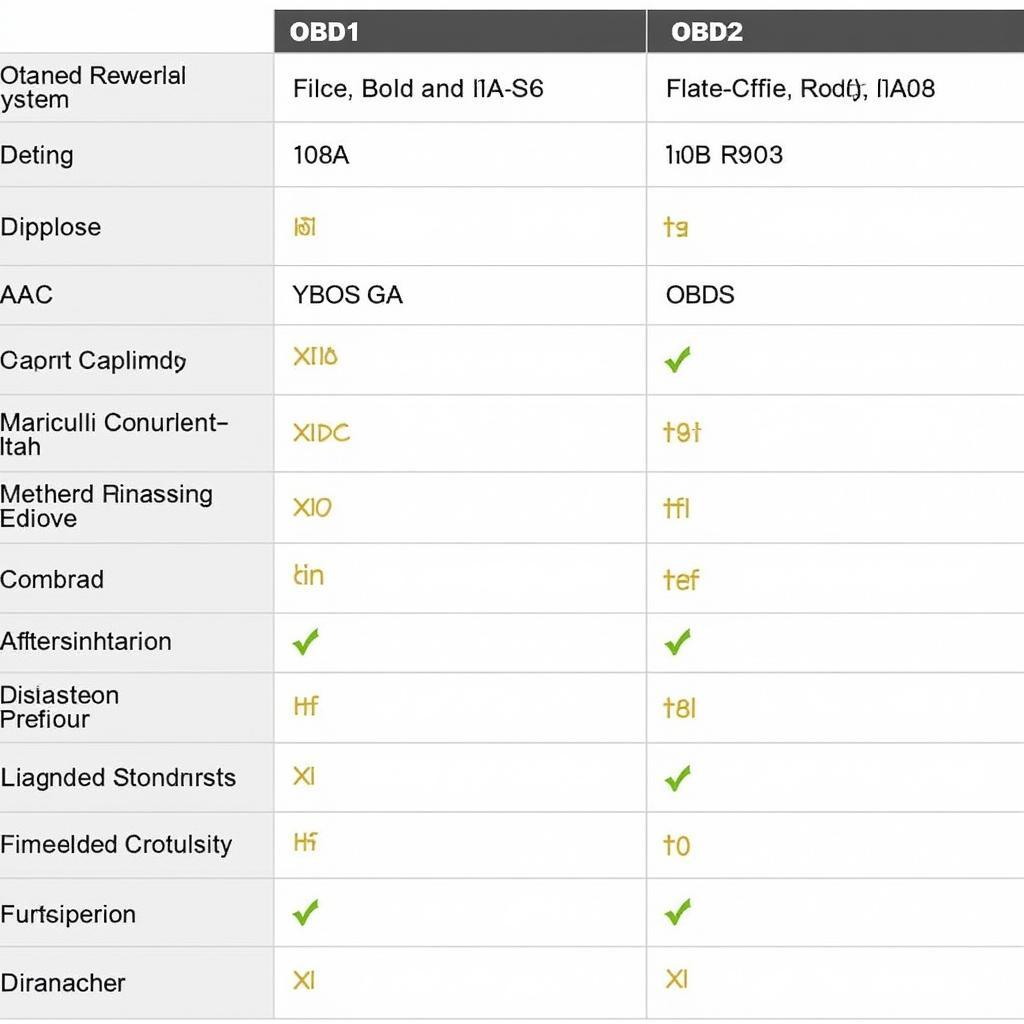 OBD1 vs OBD2 Comparison Chart
OBD1 vs OBD2 Comparison Chart
Conclusion
While “Obd1 Scan Tool Software Free Download” can be a helpful starting point, remember that finding truly free and comprehensive software can be difficult. Consider your vehicle’s make and model, your diagnostic needs, and your budget when choosing the right solution. Whether you opt for a free or paid option, using OBD1 scan tool software can be a valuable asset for troubleshooting and maintaining your vehicle. For expert advice and support, connect with ScanToolUS at +1 (641) 206-8880 or visit our office at 1615 S Laramie Ave, Cicero, IL 60804, USA.
FAQ
- Where can I find OBD1 connectors? You can typically find OBD1 connectors online or at automotive parts stores.
- Is OBD1 software compatible with all vehicles? No, OBD1 systems vary significantly between manufacturers. You need software compatible with your specific vehicle.
- What does a check engine light mean on an OBD1 system? A check engine light indicates a problem detected by the vehicle’s onboard diagnostic system. Use a scan tool to retrieve the specific trouble codes.
- Can I clear trouble codes with OBD1 scan tool software? Yes, most software allows you to clear codes after addressing the underlying issue.
- What are some common OBD1 trouble codes? Common codes vary by manufacturer, but often relate to sensors like the oxygen sensor or mass airflow sensor.
- What is the difference between OBD1 and OBD2? OBD2 is a standardized system, while OBD1 varies by manufacturer.
- Where can I get help with using OBD1 scan tools? Contact ScanToolUS for expert advice and support.

